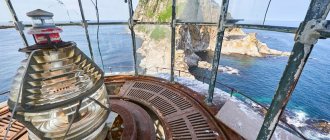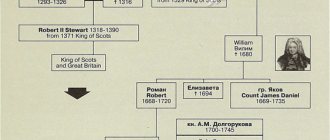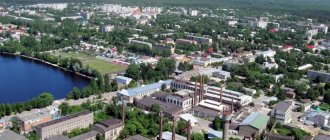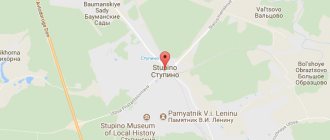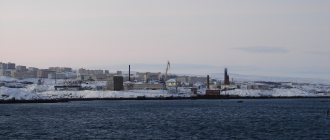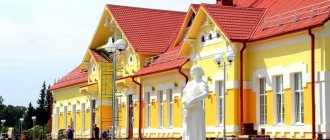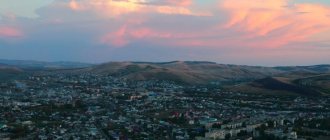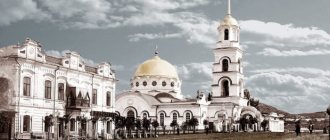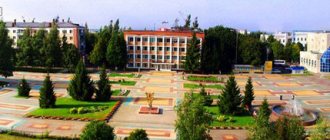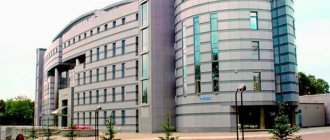History of Mikhailovsk
The emergence of the city is associated with the appearance of the plant. The Mikhailovsky plant was immodestly named after its founder, Mikhail Gubin. Oddly enough, this settlement was not renamed during Soviet times (but it was named after a capitalist!).
The Mikhailovsky plant was launched in August 1808. Previously, this particular date was considered the city’s birthday (as in most other settlements in the Urals, which began with the plant). But in the 2000s, city authorities decided to consider 1805 as the birth date of Mikhailovsk, when construction of the plant had just begun. Although it was possible to “age” Mikhailovsk even more.
The first inhabitants in this area appeared under Nikita Nikitich Demidov in the 1740s. They worked at a saw mill on the Cuba River, built barges, loaded them with iron from the Serginsky factories and sent them from the Ufa pier to Central Russia. The length of the barges reached 54 meters and the width was 8 meters. The carrying capacity was 40 thousand pounds. The Ufa River was calmer and safer than Chusovaya with its numerous fighting rocks. Although the barges sometimes fought here too. Basically, the barges with metal traveled to Nizhny Novgorod, where the products were successfully sold at the Nizhny Novgorod Fair.
The bulk of the population was transferred from the Nizhneserginsky plant to work at the plant. But some of the workers came from the Voronezh province. This is how the Voronino microdistrict arose on the right bank of the Serga. Also in Mikhailovsk there are microdistricts Center and Ufimka (it is located on the Ufa River, where the Ufimskaya pier used to be).
The Mikhailovsky plant was auxiliary. Sheet iron was produced from ingots brought from the Nizhneserginsky plant. The main products were bar and roofing iron; nails were also produced. Cast iron, fused in Ufa from the Ufaley factories, was also used.
Due to unprofitable production, the plant temporarily closed in 1910. Many Mikhailovites moved to work at the Verkh-Isetsky plant. Production recovered during the First World War, then stopped again. The Mikhailovsky plant started operating again only in July 1925. Here they began producing roofing iron again. By the way, many buildings in Sverdlovsk at that time were covered with Mikhailovsky iron, including famous buildings in the constructivist style.
During the Great Patriotic War, the plant was repurposed to produce metal for military equipment, including bimetal for aviation. After the war, the plant underwent a complete reconstruction. A foil rolling shop was launched, and in the 1950s the production of aluminum cookware began. Since then, the life of Mikhailovsk has become connected not with iron, but with the “winged metal” - aluminum.
In 1961, the village of Mikhailovsky received the status of the city of Mikhailovsk.
In 1980, the first rolling mill appeared in Mikhailovsk, making it possible to produce the thinnest foil with a thickness of 7-9 microns. The Mikhailovsky Plant once occupied a leading position in the field of foil rolling.
Unfortunately, now many of the old buildings of the plant have been destroyed, others are ruins. The stone building of a warehouse for technical materials built in 1815, which is an architectural monument, was also damaged.
Another milestone in the history of Mikhailovsk is connected with the paper mill. In 1863, on the Cuba River (at the so-called Anastasyevskaya dam), the Englishman I.E. Yates leased a plot of land from factory owner Mikhail Gubin and built a stationery factory. Yates' products were famous for their quality and were repeatedly awarded medals at exhibitions. In 1884, the factory burned down, but was rebuilt. However, ten years later, in 1894, Yates built a new stationery factory on the Pyshma River, near the village of Kurya. The Mikhailovskaya factory was mothballed.
In 1900, it was bought by local resident Mikhail Filippovich Zakharov. Six years later, he built a new stationery factory on the left bank of the Ufa River opposite the pier. The old factory in Cuba was closed. Then a steam mill and a sawmill operated here, and a water turbine operated. There is still a pond in Cuba; it is called Pilnitsky. It was stocked with carp and trout.
According to local historian Nikolai Khrushchev, in the fall of 1954, in the fall of 1954, in the quarry of a brick factory on Pilnitsky Pond, while excavating clay with an excavator at a depth of 5 meters, a mammoth bone about 60 centimeters long was found. It was not possible to save it and transfer it to the museum, because by order of the master it was thrown away and lost.
The paper mill operated in Ufimka during Soviet times. Typewritten, poster, wrapping, opaque paper, parchment, and fiber were produced here. These days, the factory has closed and ceased to exist.
During the Civil War, a large partisan detachment was hiding from the White Guards in the forests near Mikhailovsk. From time to time, the partisans carried out acts of sabotage, including those that led to the derailment of trains on the nearby Western Ural Railway. And one of the tragic episodes of the civil war took place on Mikhailovsky Pond.
The most famous native of Mikhailovsk is singer and actor Vladimir Troshin (1926-2008). Those who are older, of course, remember his famous “Moscow Evenings”, which became Vladimir Troshin’s calling card. In total, he performed more than two thousand songs. Troshin could make a hit even from a simple song.
According to the 2010 census, 9.8 thousand people live in Mikhailovsk these days. Due to economic problems, the city's population is declining. But there are more and more summer residents who are attracted by picturesque places and relatively favorable environmental conditions. For their beauty, these places are deservedly called the Ural Switzerland.
Economics[ | ]
- LLC "Mikhailovsky RTI Plant"
It is part of the group of enterprises
of CJSC
Ural Plant of Elastomeric Seals (UZEU). Specializes in the production of rubber products and raw rubber compounds. Actively participates in the social life of the city. Provides financial and material assistance to the orphanage in Mikhailovsk. - OJSC "Mikhalyum"
Specializes in the production of aluminum foil and steel-anti-friction aluminum alloys for automotive and tractor engineering. In the late 90s, it went through the bankruptcy stage, but was not declared bankrupt. External control of the plant was removed and a settlement agreement was signed. Currently part of OJSC Sual Holding. - LLC "Jasmine"
Specializes in the construction and repair of highways, production of asphalt concrete. The company was founded in 1991 on the basis of a mobile mechanized column. Over the years, the Jasmine team has built and put into operation about 50 km of public roads from Mikhailovsk to the Chelyabinsk region. A social support system has been preserved for the workers of the enterprise - a network of modern cottages and an apartment building have been built. “Jasmine” provides financial assistance to healthcare, educational, cultural and social assistance institutions in the city. - LLC "Mikhailovsky Dairy Plant"
The enterprise processes 500 tons of milk monthly. Product range: milk, sour cream, cottage cheese, curd mass, kefir and butter. - LLC "Mikhailovsky Bakery"
Every month it produces up to 800 tons of bread, bakery and confectionery products of 49 items.
Mysterious explosion
On May 1, 1957, a mysterious incident occurred in Mikhailovsk. Local historian Nikolai Khrushchev wrote about him in detail.
After the May Day demonstration, the city fell silent. Suddenly, at 4 o’clock in the afternoon, a dull explosion was heard on Mount Kukan, near Mikhailovsky Pond. Although no blasting work was carried out. A funnel formed on the mountain, from which a dirty stream of liquid clay with pieces of rock burst down the slope... In the evening of the next day, a new explosion was heard, even more powerful. The vegetable gardens located below suffered from the consequences of the explosion.
Details of this case and its explanation can be read in the book “The Serga River”.
Education and healthcare[ | ]
A network of preschool institutions is developed in Mikhailovsk. There are 1,500 children studying in three secondary schools in the city. Lyceum classes of the USPU, USGA, and Forestry University have been opened. A special general education correctional school educates and educates 90 children. On the basis of the House of Pioneers, the Rainbow Children's Creativity Center was created, in which 70 educational groups and 9 associations, 1050 school-age children attend various clubs.
In 1975, a secondary technical school was opened in the city, training groups of specialists: electricians, machine and tractor repair and maintenance technicians, and pastry chefs. Since 1978, a music school has been operating - the Children's Art School, where more than 100 children study piano and accordion. Many school teachers have been awarded the title “Excellence in Public Education.” Two were awarded the Soros Prize.
There are 2 libraries in the city - an adult and a children's.
The central cultural institution of the city is the Center for Culture and Leisure. There is an auditorium with a stage, the screening of feature films has resumed, all cultural events are held: concerts, theme evenings, amateur art shows, KVN, New Year and Christmas holidays, and interest clubs operate. Residents of the city who are interested in sports visit the Sports Complex, where there are 11 sections in athletics, volleyball, football, aerobics, sambo, bodybuilding, and powerlifting. Classes are taught by 6 masters of sports, two of whom are international masters of sports. The city’s athletes are participants and winners of various categories of competitions: from factory to international.
The city hospital employs 21 specialists with higher and 80 specialists with secondary specialized medical education. The surgery departments, maternity department, and children's department have not been working for several years. Only a day therapy hospital and an infectious diseases department are functioning.
Sights of Mikhailovsk
The main decoration of the city is Mikhailovsky Pond . The pond dam was built in 1806. This is the largest pond on the Serge River. Here is what they wrote about Mikhailovsky Pond in the Ural press of the 19th century:
“In terms of its size and beauty, this is the only pond in the surrounding factories: it stretches 9 miles in length and reaches 3 in width. Its banks are picturesque, rocky mountains, on the tops of which centuries-old pine trees have survived” (“Perm Provincial Gazette”, no. 1, 01/01/1896).
The Mikhailovsky Pond dam is perhaps the most beautiful and most impressive among other similar hydraulic structures in the Sverdlovsk region. It has three gateways. All three are opened only in the spring, draining spring water.
Behind the dam there is a place called a buchil. In front of him stand massive concrete bulls. There is good fishing here, which always attracts many fishermen.
When the pond was created, extensive bays were formed along the Serga and Demid rivers. And in the southern part the Kuba River flows into the pond.
The width of the pond reaches 800 meters. The surface area is 9 km², and the useful volume of the reservoir is estimated at 31.6 million cubic meters. The maximum depth reaches 9 meters. The water's edge is located at an altitude of 256.4 meters above sea level.
There are fish in the pond: roach (locally called chebak), bleak, perch, ruffe, pike, bream, and occasionally a chub. But every year there are fewer and fewer fish.
In the past, from time to time, a strange fish was caught on Mikhailovsky Pond - white fish. This is the largest representative of the whitefish group from the salmon family. Reaches a size of more than 120 cm and a weight of up to 15 kg. It spends the first years of its life in the Caspian Sea, and upon reaching sexual maturity it goes into the rivers. Apparently, she rose so far from the Caspian Sea.
“One of the most interesting and rare, even mysterious fish in the Mikhailovsky factory pond is the whitefish. It is caught only with nonsense and no more than 2-3 pieces per summer. None of the fishermen really knows about her life. The old people say that they learned about this fish in 1915-1917: before it was not found in the pond. Belorybitsa is not found either in the Serge River or in the Ufa River. White fish is valued as a tasty, fatty fish: white fish pie is a rare dish,” wrote local historian Nikolai Khrushchev.
The pond is divided into two unequal parts by the embankment of the railway, which connects the Mikhailovsky plant with the railway station of the same name. It was laid in 1972.
The right bank of Mikhailovsky Pond is steep, steep in places, and covered with spruce, fir and pine forest. Between the rivers First and Second Key, the bank breaks into the water with picturesque limestone cliffs. On the rocks you can clearly see the fall of the limestone layers at an angle of about 45 degrees. The rocks are a geomorphological and botanical natural monument. A complex of rock flora grows on them. You can find needle-leaved carnation, common chinstrap, and purple sedum.
They are also interesting from a geological point of view. Limestones are interbedded with dolomites and quartz sandstones. Local regional stratigraphic units of the Silurian system have been established here: Shemakha, Voronin, Cuban and Demidov layers, in the lower Devonian - the Mikhailovsky horizon. Fossils are found on the rocks: corals, brachiopods, trilobites, ostracods.
There are legends about a cave hidden in the rock as a result of rising water during the creation of the Mikhailovsky Pond.
Role-playing games were repeatedly held on the banks of Mikhailovsky Pond. The role players liked the beauty of Mikhailovsky. People came from all over the country to participate in the games. And in some places in the forests, wooden fortresses still stand.
The city is located in a basin, surrounded on all sides by mountains. It is always colder here in winter. An excellent panorama of Mikhailovsk opens from Voroninskaya Mountain , towering above the dam. From here the city is visible at a glance. In winter, there is a ski center on the slopes of this mountain.
In the center of Mikhailovsk is the Church of the Ascension . The first church, built in the 1830s, was wooden. But in the 1880s, it either burned down in a fire or simply became very dilapidated. A new stone temple was founded. The construction was led by Krasnoufima tradesman Thaddey Nikolaevich Malkov. He was known as an experienced builder. In September 1892, the main part of the temple was built and consecrated. Later, the boundaries were built and consecrated in honor of the Nativity of the Virgin Mary and in honor of the Presentation of the Lord. The temple had a bell tower 40 meters high. The weight of the largest bell was 175 pounds (about 3 tons). The sound of the temple bells could be heard for many kilometers.
On December 20, 1935, the Ascension Church was closed. The bells were removed and the bell tower was dismantled. The process was not easy. Workers partially dismantled the brickwork and propped up the bell tower with logs. It turned out that the bell tower stood on wooden pillars. Then a large fire was lit to set the supports on fire. As a result, the bell tower collapsed.
In 1937, a metallurgists' club with a cinema opened here, and since the 1970s there has been a museum here. Now the temple has been restored and is functioning.
Nearby, at the beginning of Kirov Street, there are the ruins of a two-story brick building. A vocational school built in 1902 was located here Berg, who was then the guardian of the Serginsko-Ufaleysky factories, donated part of the estate for the construction of a vocational school. Now there are only walls left, on which trees have already grown.
And next to these ruins is a wasteland. In the past, there was a wooden house of the plant manager here. Unfortunately, about twenty years ago the old house burned to the ground. All that remained was a cellar, made of old brick and rubble stone in the depths of the mountain.
Several old merchant houses have been preserved in Mikhailovsk. One of them houses the Museum of History and Local Lore . It opened in 1972. It occupies the former estate of the merchant Varentsov of the second half of the 19th century, located near the bus station (Kirova St., 30). Museum phone number (34398) 5-12-92.
In the western part of the city rises Vlaskina Mountain , named after a local resident. Until recently, this flat and vast mountain was completely bare. In recent years, the hills surrounding Mikhailovsk have begun to be overgrown with young pine trees. So Vlaskina Mountain is covered with the bristles of coniferous trees. Gradually there are more and more of them.
In 1855, a harbor-pier was built under this mountain for the construction of barges and loading of products from the Mikhailovsky plant.
Downstream of the Sergi River (on the outskirts of the Voronino microdistrict) limestone cliffs rise. The two rock massifs are approximately equally divided by the bypass road bridge.
In the lower rocks there is a picturesque Voronin grotto and Voroninskaya cave . The grotto is clearly visible even from the bridge, but you will have to look for the cave. It is not visible from below. The approximate length of the cave is 10 meters. The cave has two entrance holes (the second of them is very small). It has two small grottoes: the first is covered with earth and rubble, the second with clay. From the second grotto there is a narrow hole. The vaults of the cave are heavily smoked by torches.
There is an interesting legend associated with this cave about a treasure hidden in it. You can read more in the book “The Serga River” (as well as about many other interesting places that are not included in this article).
Honorary figures of the city[ | ]
- Troshin Vladimir Konstantinovich - singer, actor, People's Artist of the RSFSR (1984). In 1955, the actor went on stage performing songs by Soviet composers. His name is usually associated with the song “Moscow Nights,” which he first recorded for a documentary and then performed on the radio.
- Finogenov, Maxim Konstantinovich - Soviet worker and political figure. Hero of Socialist Labor.
- Fedotov, Vladimir Valentinovich - Soviet and Russian football player, later - football coach.
- Korovin, Kesar Mikhailovich - colonel of the Soviet Army, participant in the Great Patriotic War, Hero of the Soviet Union (1946).
- Ignatov, Igor Vladimirovich - Soviet and Russian football player, forward.
- Agapov, Mikhail Mikhailovich - Soviet and Russian football player and futsal player.
- Dodonov, Ivan Ivanovich - director of the Mikhailovsky plant from 1949 to 1973, just at this time the plant became a plant of all-Union significance and remained so until the 90s of the last century.
- Pevtsov, Alexey Vasilievich - writer, author of the book “Mikhailovsky Distributors”, 1985.
- Shimkevich, Lyudmila Valentinovna - journalist, editor-in-chief of the newspapers “Vestnik Mikhalyuma”, “Folga Ural” and the only newspaper in Mikhailovsk today “Municipal Bulletin”. It is thanks to L. V. Shimkevich that Mikhailovsk still has its own newspaper.
V.A. Vesnovsky about Mikhailovsk
Local historian and journalist V.A. Vesnovsky in 1917 in the Perm Provincial Gazette wrote about the Mikhailovsky Plant:
“The village is located not far from the Ufa River, along the narrow and deep valleys of the Sergi River and the streams flowing into it, and mainly along the banks of a vast and beautiful pond, surrounded by a frame of high and rocky banks... The plant is famous for its roofing iron...
The surrounding area of the village has many extremely picturesque corners. One of them is the Urkan cliff [Kukan - author's note], lying on the shore of the factory pond. There are many different legends about this rocky cliff among the local population, connected with the treasure of some robber. It is said that on certain nights a fire burns at the top of the cliff, lit by no one. The brave souls, having heard enough stories about a rich treasure hidden in the mountain, tried to go “to the light”, to the top of the mountain, but no one was able to fulfill their intention, as they strayed from well-known paths and wandered through the forest until the morning...
Nature in the vicinity of the Mikhailovsky Plant sparkles with the colors of the South Urals. The tones and lines here are softer, the contours of the mountains are more sloping, and the fertile fields on the beautiful black earth soil are more visible. Fields and birch groves are enlivened by the singing of birds, numerous streams and rivulets caress the eye..."
Notes[ | ]
- ↑ 12
The permanent population of the Russian Federation by municipalities as of January 1, 2022 (Russian). Retrieved April 27, 2022. Archived May 2, 2022. - History of the district Archived copy dated September 24, 2015 on the Wayback Machine, Official website of the Nyazepetrovsky district.
- Gazette of the Supreme Soviet of the USSR. No. 33 (148), 1941
- All-Union Population Census of 1959. Number of rural population of the RSFSR - residents of rural settlements - district centers by gender
- All-Union Population Census of 1970 The size of the urban population of the RSFSR, its territorial units, urban settlements and urban areas by gender. (Russian). Demoscope Weekly. Access date: September 25, 2013. Archived April 28, 2013.
- All-Union Population Census of 1979 The size of the urban population of the RSFSR, its territorial units, urban settlements and urban areas by gender. (Russian). Demoscope Weekly. Access date: September 25, 2013. Archived April 28, 2013.
- All-Union population census of 1989. Urban population (undefined)
. Archived from the original on August 22, 2011. - ↑ 12345678
People's encyclopedia "My City". Mikhailovsk (Sverdlovsk region) - All-Russian population census 2002. Volume. 1, table 4. Population of Russia, federal districts, constituent entities of the Russian Federation, districts, urban settlements, rural settlements - regional centers and rural settlements with a population of 3 thousand or more (unspecified)
. Archived from the original on February 3, 2012. - Administrative-territorial division of the Sverdlovsk region as of January 1, 2008 (undefined)
. Access date: May 11, 2016. Archived May 11, 2016. - The size of the permanent population of the Russian Federation by cities, urban settlements and regions as of January 1, 2009 (unspecified)
. Retrieved January 2, 2014. Archived January 2, 2014. - Number and distribution of the population of the Sverdlovsk region (Russian) (inaccessible link). All-Russian Population Census 2010
. Department of the Federal State Statistics Service for the Sverdlovsk Region and Kurgan Region. Access date: April 16, 2022. Archived September 28, 2013. - Population of the Russian Federation by municipalities. Table 35. Estimated resident population as of January 1, 2012 (unspecified)
. Retrieved May 31, 2014. Archived May 31, 2014. - Population of the Russian Federation by municipalities as of January 1, 2013. - M.: Federal State Statistics Service Rosstat, 2013. - 528 p. (Table 33. Population of urban districts, municipal districts, urban and rural settlements, urban settlements, rural settlements) (undefined)
. Retrieved November 16, 2013. Archived November 16, 2013. - Population of the Russian Federation by municipalities as of January 1, 2014 (Russian). Retrieved October 18, 2022. Archived August 2, 2014.
- Population of the Russian Federation by municipalities as of January 1, 2015 (unspecified)
. Access date: August 6, 2015. Archived August 6, 2015. - Population of the Russian Federation by municipalities as of January 1, 2016 (Russian) (October 5, 2018). Retrieved May 15, 2022. Archived May 8, 2022.
- Population of the Russian Federation by municipalities as of January 1, 2022 (Russian) (July 31, 2017). Retrieved July 31, 2022. Archived July 31, 2022.
- Population of the Russian Federation by municipalities as of January 1, 2022 (Russian). Retrieved July 25, 2018. Archived July 26, 2022.
- Population of the Russian Federation by municipalities as of January 1, 2022 (Russian). Retrieved July 31, 2019. Archived May 2, 2022.
- Population of the Russian Federation by municipalities as of January 1, 2022 (Russian). Date accessed: October 17, 2022. Archived October 17, 2022.
- taking into account the cities of Crimea
- https://rosstat.gov.ru/storage/mediabank/bul_Chislen_nasel_MO-01-01-2021.rar Population of the Russian Federation by municipalities as of January 1, 2022 (1.85 Mb, 07/30/2021)
How to get to Mikhailovsk?
The city of Mikhailovsk is located in the southwest of the Sverdlovsk region. Regular buses go here from the Southern Bus Station of Yekaterinburg (travel time is approximately 2.5 hours).
By car you need to drive along the Yekaterinburg - Perm highway, then turn at the sign for Nizhnye Sergi and go to Mikhailovsk.
In the vicinity of Mikhailovsk there is the popular natural park “Oleniy Ruchi”, and then there is the Skaz cave. Also, many tourists raft on the Serge River, finishing the rafting in Arakaevo or Mikhailovsk.
You can learn more about these amazing places from the book “The Serga River”, which was published as part of our project “Uralist”.
© Pavel Raspopov
UraloVed.ru
See also:
- Old photos of the Nizhneserginsky plant
- History of the name and logo of the Oleni Ruchi natural park
- Serga River
Population[ | ]
| Population | ||||||||
| 1959[4] | 1970[5] | 1979[6] | 1989[7] | 1996[8] | 1998[8] | 2000[8] | 2001[8] | 2002[9] |
| 10 608 | ↗12 729 | ↗12 955 | ↘12 943 | ↘12 700 | ↘12 300 | ↘11 900 | ↘11 600 | ↘10 538 |
| 2005[8] | 2006[8] | 2007[8] | 2008[10] | 2009[11] | 2010[12] | 2011[8] | 2012[13] | 2013[14] |
| ↘10 200 | ↘10 000 | ↘9800 | ↘9600 | ↘9397 | ↗9852 | ↗9900 | ↘9555 | ↘9436 |
| 2014[15] | 2015[16] | 2016[17] | 2017[18] | 2018[19] | 2019[20] | 2020[21] | 2021[1] | |
| ↘9387 | ↘9306 | ↘9191 | ↘9088 | ↘8921 | ↘8776 | ↗8779 | ↘8720 | |
As of January 1, 2022, in terms of population, the city was in 178th place out of 1116[22]cities of the Russian Federation[23].
